"This film Documents the voyage of the Baden-Powells, and 650 Scouts and Guides, as they cruise Europe in the SS Calgaric visiting Scout and Guide groups in Europe, on an ‘Argosy of Peace’.
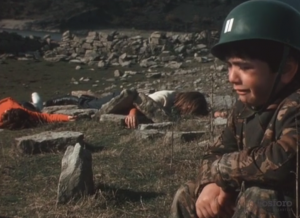
Un pequeño niño llamado Sergio hace una lista de regalos que desea, en la que incluye un traje de soldado, una metralleta y otras armas. Después Sergio tiene un sueño en el que es un soldado explorando el campo y divirtiéndose con sus armas; el sueño se transforma en pesadilla cuando ve a su familia muerta y cubierta de sangre. Sergio llora y besa a sus familiares muertos para después tirar su metralleta de juguete cubierta de sangre. Después despierta asustado y destruye su lista de deseos.
A little boy named Sergio makes a wish list of gifts that include a soldier suit, a machine gun and other weapons. He then has a dream of himself as a soldier exploring the country and having fun with his guns; the dream turns into a nightmare when he sees his family dead and covered in blood. He cries and kisses the dead members of his family and finally he throws away his toy machine gun covered in blood. Sergio wakes up scared and destroys his wish list.
"a comedy about a group of dope smugglers on a canal" (HMHT 1933: 450).
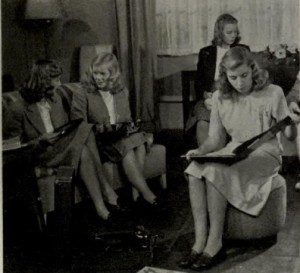
"Sitting Right, a lively, attractive argument for good sitting posture, directs its message to the 'teen aged young ladies of America. Shrewdly, its producers — Grant, Flory and Williams — have brought complete authenticity to this possibly unpopular thesis by presenting it throughout in the playing of actual (and average ) high school girls. These same girls, adds John Flory, the director, even contributed many of the situation suggestions which are woven into the swiftly moving message of the film. The production is marked by fine lighting and camera work, heightened in their effect by a modern and refreshing treatment of the narrative track." Movie Makers, Dec. 1946, 490.
[Also known as Foiled or The White Slaver]
"the story deals with the activities of a notorious blackmailer who gets a financier and his sister into his clutches" (HMHT 1932: 222).
"a crime story which has a background of blackmail and intrigue" (Lovell Burgess 1932: 17).
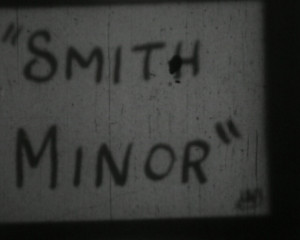
"Amateur filmmaker, cinema historian and railway engineer H.A.V. Bulleid presents a tale of brotherly rivalry. When Smith Minor - 'so little, he was lost in an Austin Seven' - is bullied by his older brother, Smith Major - 'so tough he slept on tin-tacks' - he is resolved to get revenge, once and for all. Employing the help of a friend and mutual enemy, he hatches a plan of vengeance, plotting to 'heave him over the quarry'. An altercation between two boys is followed by the introduction of Studious Stevens, 'so classical he couldn't fathom science'’ (EAFA Database)" [NOTE – EAFA database suggests this is an incomplete film].
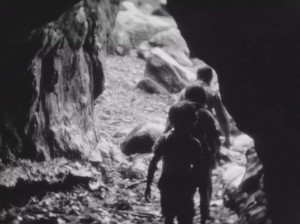
"The film-maker's three children - John, Mary and Anne Arundel, in a story of seaside treasure-hunting, with the familiar plot devices of an old map, inn, sea cave and rising water threatening to cut off escape" (EAFA Database).
"Not content with the typical family holiday bucket and spade film, Herbert Arundel from Longsdon in Staffordshire recorded his three children in a tense drama during a pre-war holiday in Cornwall. Its youthful protagonists and smugglers' treasure plot pre-dates the Famous Five by a good few years and culminates in a splendidly tense finale. Will the Arundel children return from the adventure victorious or will the evil local put a stop to their ways?" (BFI Player)
"Margaret Conneely's film So Long Ago (c. 1950s) intercuts footage of children reading about dinosaurs with special-effects shots of dinosaurs, borrowed from a commercial film (perhaps The Lost World, 1925)" (Tepperman 335).
"All of the players in this picture were boys in a summer camp who upon discovering that one of their members has a movie camera decide to make a motion picture. Like all youth they decide to imitate and based their story on Tarzan. The producers of this worked up a splendid bit of comedy, interjected a fine piece of melodrama with an Alger Jr. finish that rounded it out into a production that many of the judges felt would have been worthy of showing in any theatre. The acting, direction, story and handling as a whole was considered equal to many a professional comedy." American Cinematographer, Dec. 1932, 7.
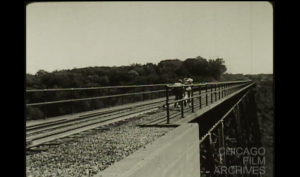
"A man pulls over to repair a flat tire on his car and is quickly ambushed and robbed by a passerby. The victim regains consciousness and soonafter chases the robber up onto a train overpass where the two battle it out." Chicago Film Archives
Total Pages: 12